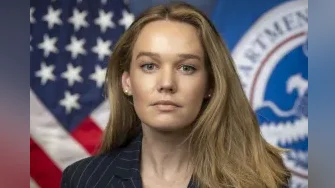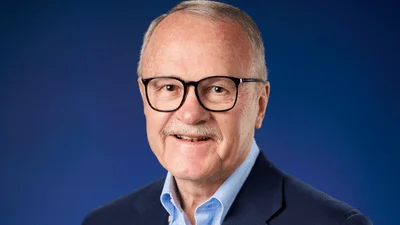More motorists are using mobile devices, and thousands of people are dying because of distracted drivers, a new study reveals.
A majority of licensed drivers (70%) admitted using mobile devices while driving in the last 90 days, according to a survey commissioned by Selective Insurance and Advocates for Highway and Auto Safety and conducted online by The Harris Poll in March of among more than 2,000 U.S. adults, of whom more than 1,800 are licensed drivers. A higher percentage of people (86%) reported using a mobile devices while driving for work in the last three months.
“On top of a surprisingly high number of employees who drive for work using a mobile device while driving for work, almost a third [29%] participated in a video call while driving,” said Brenda Hall, executive vice president and commercial lines COO at Selective in a release. “April is National Distracted Driving Awareness Month. With more drivers back on the roads and the increasing popularity of virtual work and video calls, it's more important than ever that employers develop and enforce distracted driving policies to keep employees and the general public safe on the roads.”

Advocates for Highway and Auto Safety President Cathy Chase.
| Submitted
Almost one-third of Americans (31%) have been in a vehicle crash linked to distracted driving or knew of someone who had, the survey revealed. Younger drivers are much more likely to have been in one or knew of someone who had, with 46% of Americans between 18-44 reporting this, compared to 18% of people 45 and older.
Advocates President Cathy Chase said the number of people killed or injured is appalling.
“The number of people killed in crashes involving distracted driving exceeded 3,000 in the U.S. in 2020. More than 420,000 people were injured in 2019, the most recent year for which data is available,” Chase said in the release. “This survey reveals the deadly and dangerous decisions by drivers contributing to this horrific fatality and injury toll. Additionally, one in three people involved in or knowing someone in a distracted driving crash where mobile device use was a factor should send off blaring alarms that urgent action is needed to address this public health calamity on our roadways.
"The public understands this hazard," she added. "It strongly supports numerous strategies to prevent distraction and its impacts, especially requiring advanced vehicle safety technologies in all new vehicles, which continues to be a top priority of Advocates.”
Americans favor changes to make their roads safer. According to the survey:
- 58% of Americans cite requiring advanced safety technologies as standard in all new vehicles
- 57% cite higher penalties and traffic fines
- 50% cite comprehensive state laws that limit mobile device use while driving to directions or emergency purposes only
- 29% cite questions on the dangers of distracted driving and prevention in the driver’s license test
Chase told USDOT Newswire that the public wants action. They are aware of the mayhem on the roads they use.
“A national public opinion poll, conducted by ENGINE INSIGHTS using the CARAVAN survey in December 2021, found overwhelming concern about distracted driving with 84% ‘extremely’ or ‘very’ concerned,” she said. “This same survey found a strong majority agrees that not enough is being done to reduce dangerous behavior on our roadways. Notably, this response was fairly consistent across political party [66% of Republicans, 64% of Democrats, and 73% of independents].”
Selective Insurance Senior Vice President of Government and Regulatory Affairs Jeff Beck told USDOT Newswire that distracted driving is a major concern that must be addressed.
“Distracted driving is pervasive and impacts the safety of everyone on our roads,” Beck said. “As an insurer committed to providing unique insurance solutions and helping to keep our customers safe, we consider distracted driving to be one of the most dangerous behaviors on our roadways today.
“In recent years, distracted driving — particularly involving mobile devices — has become second nature for many drivers,” he said. “A recent study by Selective Insurance and the Advocates for Highway and Auto Safety, conducted by the Harris Poll, found that 86% of licensed drivers whose jobs include driving responsibilities used a mobile device while driving in the past 90 days. Among those 86%, more than a third [35%] engaged in recording, live-streaming, or watching a video with a mobile device.”
Beck, however, said it would be a mistake to look at this as a new problem that has cropped up in recent years.
“Distracted driving was present on our roadways before the pandemic," he said. "In 2019 distracted driving cost employers $4.3 billion, according to the Network of Employers for Traffic Safety, a number that includes medical care, liability, lost productivity, and property damage. As many employees reopen their workplaces, employees are driving more for work. It’s therefore imperative that the dangers of distracted driving are understood and addressed.”
Beck said the study didn’t delve into a state-by-state analysis, but it did show more respondents in suburban areas reported seeing someone driving while using a mobile device (60%) than drivers in rural (56%) and urban (50%) areas.
Chase said daytime is more dangerous because of distracted driving.
“Data from NHTSA indicates that the proportion of fatalities in crashes involving a distracted driver vs. not [distracted] is greater during the day (6 a.m.-5:59 p.m.) and on weekdays as compared to evenings (6 p.m.-5:59 a.m.) and weekends,” she told USDOT Newswire.
There are effective countermeasures, Beck told USDOT Newswire.
“Employers must have distracted driving policies in place to support and protect employees while also managing broader risks,” he said. “Given the amount of employee turnover over the last few years, it’s imperative that employers revisit these policies to ensure that they are still effective. With more workers driving than in the previous two years, employers should also be communicating the policies with employees to make sure they are aware of the expectations.”
Chase shared statistics on the problem with distracted driving. She noted that 3,142 people were killed in distraction-affected crashes in 2020, making up 8% of all fatalities that year. This was a 0.7% increase from 3,119 deaths in 2019.
In 2019, the most recent year for which injury data is available, 424,000 people suffered injuries in distracted driving crashes, according to the National Highway Traffic Safety Administration (NHTSA).
Over the last eight years, distracted driving deaths have averaged a little more than 3,200 each year, reaching a low in 2018 of 2,841, and a high of 3,477 in 2015.
Did the COVID-19 pandemic play a role? It’s unclear, Chase told USDOT Newswire, but most people think there is a connection.
“There is currently a limited amount of official data from NHTSA on distracted driving during the pandemic, but we do know that distracted driving fatalities increased in 2020 compared to 2019,” she said.
NHTSA has reported that other major elements involved in fatal crashes, such as impaired driving, speeding and failure to wear a seat belt, have contributed to recent spikes in crash deaths, Chase said.
“Additionally, reports from state transportation safety officials conveyed in local media, indicate that distracted driving has increased during the pandemic,” she said.
There are a number of proven solutions that can be implemented at both the state and federal levels to reduce distracted driving and its impacts, Chase said.
“Advocates urges state lawmakers to prioritize comprehensive laws prohibiting device use while driving,“ she said. "Laws should ban texting and all device use by novice young drivers [with limited exceptions]. They also should restrict distracting activities such as using apps, streaming video, cameras, social media and gaming.”
The Advocates-Selective survey found that half of Americans believe comprehensive state laws can be effective in reducing mobile device use while driving. Another key to reducing distracted driving crashes is requiring advanced driver assistance systems (ADAS) like automatic emergency braking with pedestrian and bicyclist detection, lane departure warning (LDW) and blind spot detection (BSD) in all new vehicles.
Almost 60% of Americans think technology such as ADAS that can prevent distracted driving crashes, according to the Advocates-Selective survey.
Technology that detects an imminent collision warns the driver and applies the brakes if necessary, has the potential to prevent distraction-involved crashes as well as those involving impaired and drowsy driving, and speeding. The Insurance Institute for Highway Safety (IIHS) has found that equipping passenger vehicles with AEB systems reduces front-to-rear crashes by 50%.
Chase said some states are making more of an effort to deal with this problem.
“There are currently 30 states meeting Advocates’ criteria for optimal distracted driving laws in our annual Roadmap of State Highway Safety Laws, which includes both an all-driver text messaging restriction and a teen/novice driver cellphone restriction,” she said. “Only three states have neither of Advocates’ recommended laws on the books [Missouri, Montana and Nebraska]. This session several bills that would significantly upgrade Missouri’s distracted driving law are pending, and we urge the Legislature to take action now to protect its road users.”
As wireless communication device technology has developed from cellphones to smart phones, and the range of electronic communication platforms has significantly broadened to include apps, cameras, social media, gaming, etc., some states have made further upgrades to their laws to keep pace with the technology and ensuing distraction, Chase said.
Daniels said there is a role for Congress and the body has shown an interest in reducing the deadly toll.
“Congress took steps to address distracted driving with the passage of the Infrastructure Investment and Jobs Act (IIJA, Pub. L. 117-58), enacted last November,” she said. “The law adds a new grant opportunity for states that ban distracted viewing and improves transparency in the grant determination process. The IIJA also included requirements for certain crash avoidance technologies in new vehicles, including automatic emergency braking (AEB).”
Before joining Advocates, Chase worked for nonprofits serving at-risk youth and political fundraising and campaigning. She earned an undergraduate degree at Rutgers College and a law degree from the George Washington University Law School.
Beck previously served as head of state government relations for Aetna. He has served as chairman of the Insurance Council of New Jersey, board member of the Insurance Federation of Pennsylvania and chairman of the government affairs subcommittee of the Property Casualty Insurance Association of America. Beck earned his B.S. in criminal justice from Pennsylvania State University.





